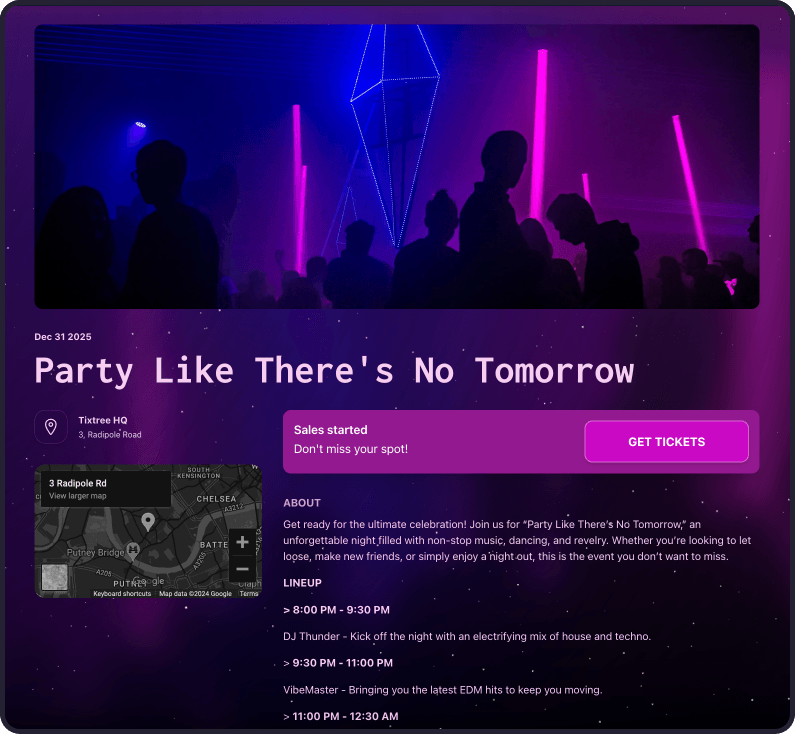
We provide a comprehensive solution to streamline your ticket sales and your event management for just $0.40 per ticket sold.
Ticketing fees should not be expensive, allowing you to invest more in creating unforgettable experiences for your attendees.
Don't let Eventbrite, TicketLeap, and TicketSpice overcharge you. Compare their service fees to ours on a single $10.00 ticket order - can you spot the difference?
Absolutely thrilled with Tixtree! Not only is their ticketing platform incredibly user-friendly and feature-rich, but their affordability truly sets them apart from other players in the market. With transparent pricing and no hidden fees, I've found their service to be remarkably cost-effective.
by Casa Alkimia on Trustpilot


Tixtree is a very user friendly ticket selling service, with lots of very convenient options and infos to meet all your needs. But that's not the best thing about Tixtree. The best thing about it is actually its exceptionally responsive, sympathetic and efficient customer service.
by Nazara_13 on Trustpilot
Looking for a surprise? Roll the dice and let the magic happen.

Great user interface and very responsive team. I also like the new formats/colors/patterns that are available. Much more streamlined than Eventbrite. Will use this site for my events again and again!
by Brady on Trustpilot